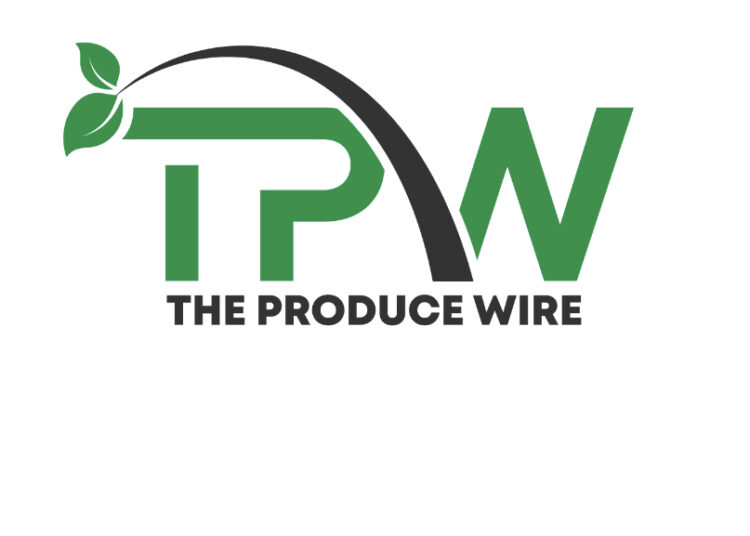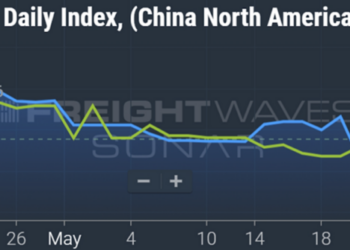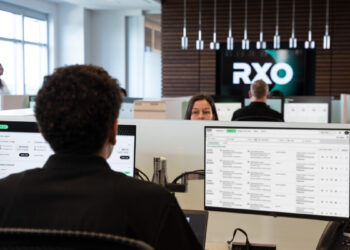Every day this week at 5 a.m., Kathy Fulton, executive director of American Logistics Aid Network, has started her day. Her first priority, as well as her team’s, is to check the latest weather updates and scan any requests that have come in throughout the night.
Then they set about their work of connecting nonprofit organizations with logistics services providers willing to donate time to assist those in need. The goal is to help people hit by natural disasters get back on their feet as soon as possible. It’s never an easy job. This week it’s even harder.
“There’s no such thing as a typical day for us right now,” Fulton explains in an interview with FreightWaves.
“When I saw that purple hurricane icon [Tuesday] morning, I knew we were in for an especially intense situation,” she adds, referring to the original Category 5 designation for Hurricane Milton.
The work it takes
Before Wednesday, ALAN had 32 open cases. These are requests from organizations that are working to help rebuild and restore areas affected by natural disasters the past few months and need resources.
In the past month, the nonprofit has been actively monitoring disasters, including Hurricanes Helene, Francine, Debby and Beryl, Tropical Storm Alberto, New Mexico wildfires and landslides, Iowa flooding, Oklahoma tornadoes, Texas wildfires, atmospheric river storms in California, the Louisiana saltwater intrusion, and the war in Ukraine.
Now Milton has arrived, hitting an area already battered by Hurricane Helene less than two weeks ago. It is the 13th named storm of the year.
As of Wednesday afternoon, 114,454 Florida households were still out of power from Helene, according to PowerOutage.us. So a priority of ALAN’s is working to enable trucking companies to transport solar panels and generators for people in these areas.
Other important materials still need shipping to these areas as well, like medical equipment and refrigerated trailers to store vital but perishable items. Now that Milton has slammed Florida, it is likely going to stress these efforts further as the destruction proliferates.
ALAN has an unusual position as middleman between nonprofits, which do boots-on-the-ground work amid disaster recovery, and the private supply chain sector, which is able to transport and store necessary equipment and supplies for recovery efforts. The team activated for Hurricane Milton earlier this week. But there’s a problem: No one will know what is needed until after it is already needed.
So the nonprofit is helping a wide range of organizations collaborate with the logistics sector to overcome that challenge and deliver aid that is as closely tailored as possible to the needs that are arising amid the hurricanes’ devastation.
There is the United Cajun Navy, which works in tandem with the supply chain to reach people throughout the United States. The organization has provided holiday meals, toys, medical supplies, generators and more for those still reeling after disasters.
Heart to Heart International does similar work but focuses on medical needs, shipping hygiene kits, medical supplies and aid, as well as deploying staff and medical volunteers, equipping and sending portable container clinics, and supporting existing clinics.
Meanwhile, the main goal of GotLift.org, a nonprofit logistics company, is to transport first responders, relief workers and cargo to disaster sites, while Trucks With Room to Spare taps into a community of drivers willing to donate their services to transport relief supplies.
Matching the needs of the nonprofits to the businesses capable of helping them out means mediating between these two completely different sectors, as well as working with government agencies that might not understand how the private sector supply chain functions.
“We’re the middlemen, translating the needs of the nonprofits into language the businesses can understand,” Fulton said. “Our goal is to make it as easy as possible for companies to lend a hand during these disasters.”
But the work doesn’t stop there. ALAN also plays a vital role in sharing critical information with government agencies, anonymizing data from private sector supply chains to ensure an effective, targeted response. “We don’t want truckloads of MREs going to a community where the grocery stores are already back up and running,” Fulton continued.
Throughout the day, the ALAN team is in constant communication, coordinating conference calls and updating its comprehensive disaster microsite, alanaid.org/operations. The online resource serves as a one-stop shop for the latest information on road closures, curfews and other essential updates.
On Monday, it was updated to include a new Situation Report that includes specifics about the storm’s projected path, impacts it will have, links to transportation waivers, and state business and industry resources.
The spread of misinformation
Right now, the team is likely trying to get a good sense of what has actually happened on the ground overnight and learn what the real needs are. This is especially difficult during this year’s hurricane season, as misinformation has been rampant.
The Federal Emergency Management Agency even launched a microsite devoted to dispelling dangerous rumors throughout the storms.
Luckily, Milton’s projected path was relatively clear, even if the models were not enough to get an exact picture. The storm was headed almost straight for Tampa, a hub that is critical to Florida’s supply chains. ALAN had predicted a need for everyday goods throughout the entirety of Florida, not just areas hit directly.
Central to the job Fulton’s team is carrying out is determining not only human needs, but business needs. For life in these areas to get back to normal, businesses that residents rely on need to be able to operate. ALAN works to connect partners to make that happen as well.
“It’s important to get these businesses back up and running because they take care of nourishment and care needs,” Fulton explained. “When these things are turned back on, there is less that FEMA and the government have to deal with. Modern supply chains are good at serving what people want and need.”
Fulton, who has evacuated her own home due to the storm in an effort to stay connected, knows the personal toll this work can take. “At some point, we’re all going to need a break,” she admits. “But right now, our focus has to be on the communities that are counting on us.”
As Hurricane Milton stretches across Florida, the ALAN team is driven by the knowledge that its efforts can make a tangible difference. “This isn’t just a logistics problem,” Fulton says. “It’s a human issue, and we’re here to help in any way we can.”
The post Disaster response: A day in the life of ALAN during a hurricane appeared first on FreightWaves.













